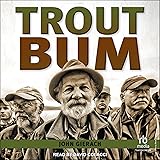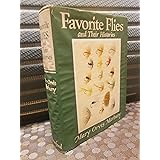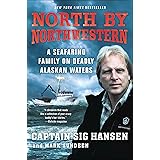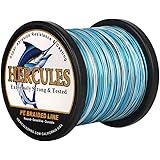Living in the vast, untamed wilderness of interior Alaska presents unique challenges and rewards. For many families, subsistence living is not just a lifestyle choice; it is a necessity. Reports show that a significant portion of rural Alaskan residents depend on traditional hunting, fishing, and trapping to sustain their households, often providing over half of their annual protein intake. The video above offers a glimpse into this demanding yet fulfilling way of life in the Copper River Basin, as winter’s icy grip begins to tighten.
As the land freezes, resourceful individuals like those featured in the video adapt their strategies. They utilize frozen landscapes for better access and work tirelessly to gather food and prepare their homestead before deep snow makes travel and work nearly impossible. This dedication highlights the constant effort required to thrive in such an environment. Every day is a race against the elements, securing resources for the months ahead.
1. Navigating the Frozen Landscape: ATV Travel and Winter Access
The changing seasons dramatically impact travel in Alaska. With the ground frozen solid but minimal snow cover, ATVs become vital. This brief window allows access to areas normally too boggy in summer. The hardened terrain supports heavy vehicle weight, opening new hunting grounds.
Frozen waterways also create new pathways. Traversing rivers and lakes on ATVs offers direct routes. These conditions are fleeting, however, as heavy snowfall soon restricts mobility. Understanding these seasonal shifts is crucial for successful resource gathering.
Hunting Spruce Grouse: A Quiet Pursuit
Hunting small game like spruce grouse provides essential protein. The video shows hunters quietly seeking these birds. They are often difficult to spot in dense spruce trees.
One effective technique involves listening intently. Spruce grouse make distinct cracking sounds while eating spruce needles. This auditory cue helps locate them when visual identification is tough. Patience and keen observation are key to a successful hunt.
2. The Art of Beaver Trapping: Sustaining the Homestead
Beaver trapping is a traditional and sustainable practice in Alaska. Beavers provide both meat and valuable fur. They are also highly active in the Copper River Basin.
The video highlights setting “beaver sets” around lodges and feeding areas. These locations indicate active beaver presence. Properly setting traps requires skill and knowledge of beaver behavior.
Understanding Beaver Ecology and Trap Setting
Beavers are industrious, constantly felling trees for food and dam construction. Their activity leaves tell-tale signs: chewed stumps, fresh cuttings, and worn runs. Trappers look for these indicators to place their sets.
Common traps include Conibear traps (lethal, quick kills) and foothold traps (live capture, often for relocation or fur protection). Proper placement ensures humane and effective trapping. The goal is to intercept beavers along their travel routes to and from lodges or feeding sites. This requires careful study of the animal’s habits.
3. Valuing Wild Game: The Versatility of Beaver Meat
Beaver meat is a highly underrated wild game. It is a nutritious and versatile food source. The video praises beaver meat, comparing it to wild pork or beef jerky.
Proper preparation enhances its flavor and tenderness. Younger beavers yield more tender meat. Older animals can be tougher, but are still delicious when slow-cooked or stewed. It offers a rich, unique taste for the adventurous palate.
Cooking and Utilizing Beaver
Beaver meat can be roasted, stewed, ground, or even dried. The fat content varies by season and diet. Many find it pairs well with robust seasonings. Sharing game meat, like the beaver and moose stew mentioned, strengthens community ties in remote areas. This tradition ensures everyone has adequate food supplies.
4. Anticipating the Whitefish Run: A Seasonal Bounty
Alaskan whitefish are a vital food source. Their annual spawning run is highly anticipated. This event typically occurs when river bottoms begin to freeze.
Timing is critical, but also unpredictable. There have been years when the whitefish simply did not appear. Monitoring weather and ice conditions helps predict their arrival. Successfully fishing whitefish requires patience and local knowledge.
The Importance of Whitefish to Alaskan Diets
Whitefish are a staple for many Alaskan families. They provide an abundance of protein and essential nutrients. Local communities rely on these runs for winter food stores. The unpredictability underscores the challenges of subsistence living. Diverse food gathering strategies are therefore essential.
5. Homestead Development: Building for the Future
Life in Alaska’s interior involves constant building and maintenance. The homesteaders in the video are working on a new barn. This structure serves multiple purposes for their growing needs.
It will house horses and provide much-needed storage. Living in a small cabin creates a strong demand for organized space. Building before heavy snow falls is a priority. This ensures project completion before severe weather hits.
The Role of Infrastructure in Remote Living
A barn is more than just a shelter; it is a critical piece of infrastructure. It supports animals, protects tools, and stores supplies. As the family expands their cabin, the barn will serve as a construction hub. These structures are key to long-term self-sufficiency. They are essential for managing resources efficiently in the wilderness.
From Trap Line to Tackle Box: Your Alaskan Wilderness Q&A
What is subsistence living in Alaska?
Subsistence living in Alaska means relying on traditional hunting, fishing, and trapping to gather food, often providing more than half of a family’s annual protein.
How do people travel in Alaska during the early winter?
In early winter, when the ground is frozen but snow is minimal, ATVs are used to access areas that are otherwise too boggy and to travel across frozen rivers and lakes.
Why is beaver trapping important in Alaska?
Beaver trapping is a traditional and sustainable practice in Alaska because beavers provide both valuable fur and nutritious meat for homesteads.
What is beaver meat like to eat?
Beaver meat is a highly nutritious and versatile wild game, often praised for its rich, unique taste, which some compare to wild pork or beef jerky.
Why are Alaskan whitefish important to local communities?
Alaskan whitefish are a vital food source because their annual spawning run provides an abundance of protein and essential nutrients that communities rely on for their winter food stores.








